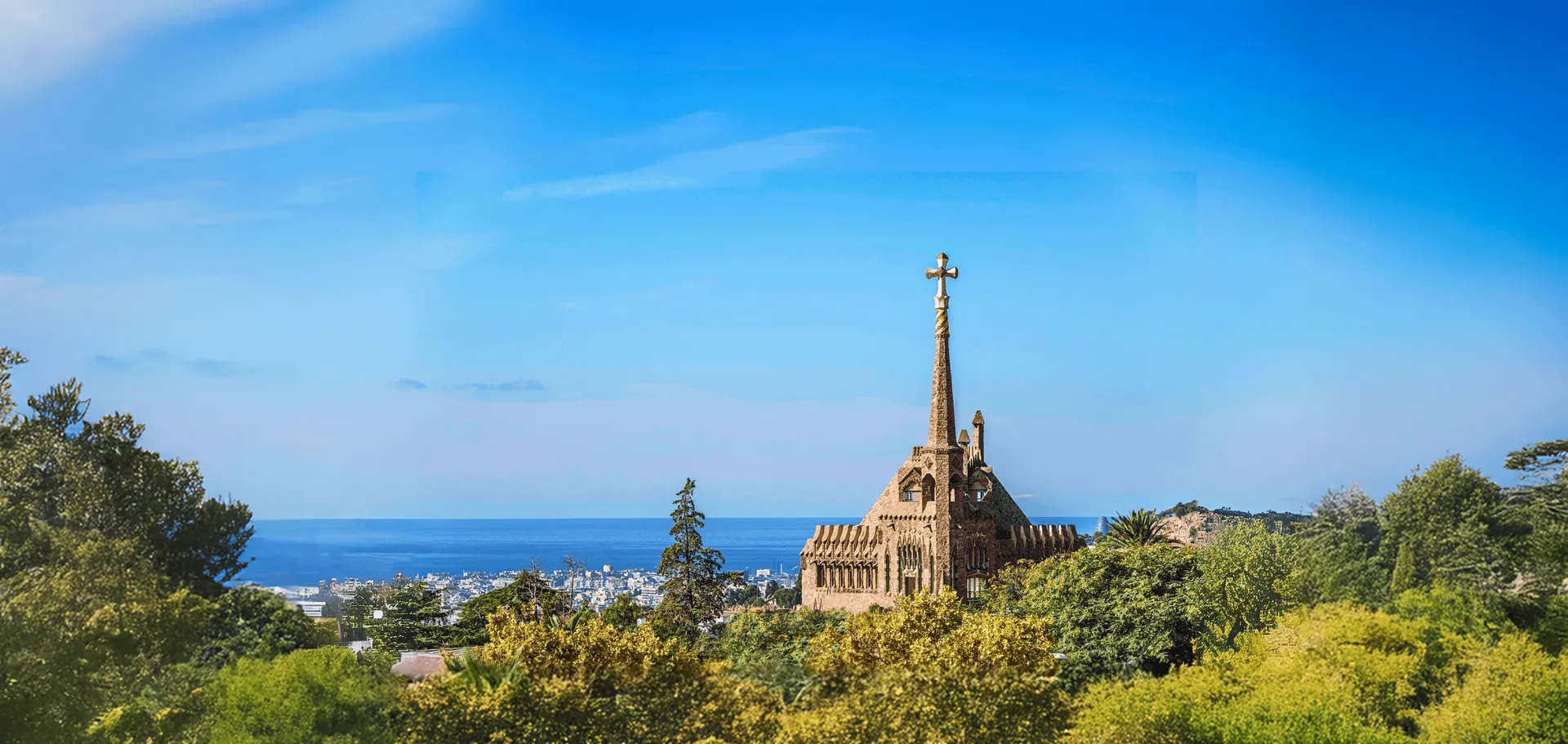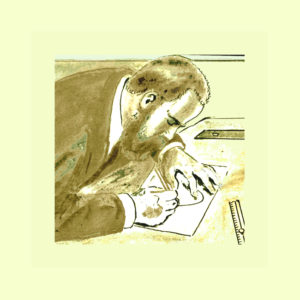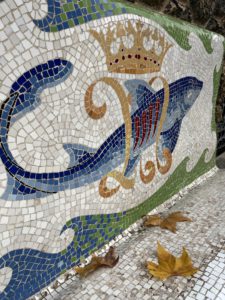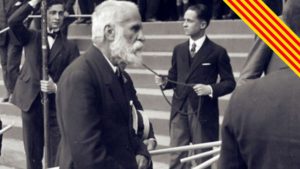March 28, 2025
By Ferran Garcés, Amèlia Guilera and Anna Mollet
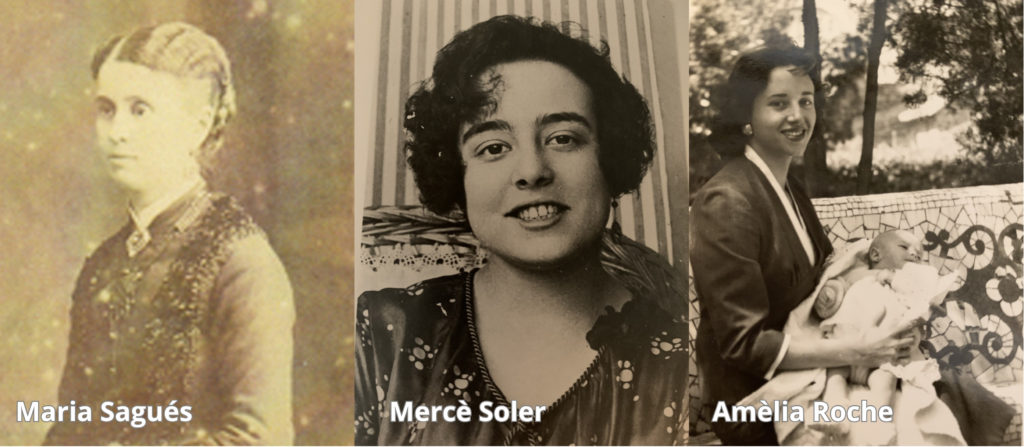
Today we finish the series of the women of Bellesguard. We do it with the three great women who have lived in the house designed by Gaudí. The others did it in the old palace of King Martí the Human. The women of the new era of Bellesguard are part of two families that have also left great contributions to the history of Bellesguard, and it is to them, as the soul and heart of their family nucleus, that we want to pay tribute today.
Maria Sagués i Molins (1835-1907)
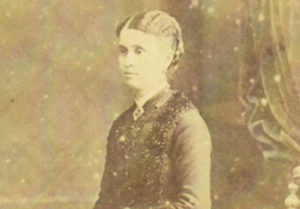
It is tradition that the surname of the owner of a building is attached to that of the house (Manuel Vicens – Casa Vicens, Josep Batlló – Casa Batlló, etc). On the surface, this seems to be the case with Torre Bellesguard, also known as Casa Figueras in memory of Jaume Figueras i Barulls (1828-1887), a pasta merchant who was a close friend of Gaudí (1). However, this merchant died in 1887, that is, long before the architect began work on Torre Bellesguard, in 1901
The one who actually bought the property was his wife, Maria Sagués i Molins (1835-1907). She did so on 4 setember 1900. It was also she who commissioned Gaudí to build it, sometime before that day. On 25 October of the following year, the City Council granted the building permit and, by 1903, the main house had already been completed. In theory, therefore, the name of the house should have been “Casa Sagués”, but in practice, the house continues to bear the name of her late husband and she is only mentioned as his widow. Isabel Segura Soriano, author of the book Dones de Sarrià-Sant Gervasi, when speaking of Maria Sagués, concludes by saying: “This is not an isolated case in the memory of the city, a memory that is often very selective when it comes to remembering women’s initiatives” (2).
A descendant of Maria wrote a book about the Figueras’ time in Bellesguard. Thanks to this book, we know some details about its first owner. Among others, the anecdote that one of Maria’s sons visited her to
observe the total solar eclipse of August 30, 1905, an important astronomical and social phenomenon of her time (3). We also know that Maria “was very fond of making jams and preserves”. For this reason, she planted fruit trees “such as pear trees, sour orange trees, grapefruit trees, etc.”, as well as “horse chestnut trees, willows, adelphias, laurels, lime trees, palm trees”(4).
Mercè Soler Iglesias (1902- 1996)
Another fundamental woman in the history of Bellesguard was Mercè Soler Iglesias.
Originally from the Balearic Islands, she married Lluís Guilera Molas, a renowned oncologist of the time, in 1925.
They leave for their honeymoon in Brussels, where they collect some radium needles, which Mercè will smuggle into the country. They were the first to enter the Spanish state. On their honeymoon they will go with other doctors who are colleagues of her husband from the Hospital de la Santa Creu i Sant Pau.
In 1944, Lluís Guilera Molas bought Bellesguard to set up a hospital there, after what is known as the “Purification of civil service structures” prevented him from continuing to practice medicine at the Hospital de Sant Pau due to his Catalanism.
At the beginning of 1945, Mercè and her family moved to Torre Bellesguard, where the youngest of their six children was born. They settled on the second floor of the building, while the eight-room clinic where her husband and eldest son worked was located on the first floor.
Thus, the building had two different uses: home and clinic.
Always at her husband’s side, Mercè helped both in the consultation and in the laboratory. Her husband died in 1969 and Bellesguard was inherited by her eldest son, Lluís Guilera Soler. She lived on the second floor until her death in 1996.
Amèlia Roche Plaxats (1933-2022)
Amèlia Roche was Bellesguard’s main ambassador to the world. Her education and beauty, and her way of welcoming everyone who wanted to visit the house, made her known everywhere.At a young age, she married Lluís Guilera Soler, a gynecologist and obstetrician, in 1955. Their five children were born in Bellesguard, when this was a clinic where patients were treated, both for her husband and her father-in-law. For a long period of time, Amèlia was the administrator of the clinic, keeping the accounts and in charge of general services and purchases, until in 1973 it was decided to end the medical activity and transfer it to the Delfos Clinic.
The Guilera Roche family moved to live, a year later, on the first floor, while Mercè Soler continued to live on the second. Bellesguard ceases to be a hospital and remains solely a home. Upon her husband’s death, the property passes to her five children: Amèlia, Mercè, Rosa, Gemma and Lluís, and she is the usufructuary.It is during this period that the Bellesguard Tower is opened to the public for the first time by her eldest granddaughter, Anna Mollet. In 2013 Bellesguard opens its doors, combining once again a dual use, that of a home and that of a House Museum.
Many of the people who visit Bellesguard today have a connection to it from when it was a hospital. Some had a relative admitted to the oncology clinic, but most were there when it was a maternity ward. Many of them are people born in Bellesguard and still remember Amèlia Roche and the exquisite treatment she gave them.
We said at the beginning that Amèlia Roche was an ambassador for Bellesguard, and not only as the administrator of the clinic, but also in the dimension of a Gaudí monument, welcoming all kinds of Gaudí scholars from around the world, journalists, artists and the curious, and everyone found an open door and a smile.
María Sagués and the Figueras family were a faithful reflection of the Renaixença, the cultural movement of Gaudí’s time, characterized by the Catalan cultural revival and the recovery of its language.Mercè Soler, Amèlia Roche and the Guileras preserved the spirit of that impulse, aware of the legacy of the house and the homage that, through it, Gaudí wanted to make to Catalonia.
Both families left great contributions to the history of Bellesguard, and it is to them, as the soul and heart of the family nucleus, that we want to pay tribute today.
Notes
The factory of this family is still preserved at Rambla 83, although transformed into a pastry shop, L’Escribà. On the website of the Arior Barcelona jewelry store, owned by a descendant, we see that the family recognizes the active role of their ancestor: “One of his sons, Jordi’s great-grandfather, Jaume Figueras i Barrulls with the help of his wife, Maria Sagués, energized the company and diversified the business.” See the link: here.
Segura Soriano, Isabel (2011) Women of Sarrià-Sant Gervasi. Historical Itineraries, Barcelona City Council, p. 18. See online: here
Figueras i Bas, Josep Mª (2016) The Figueras family. The lords of Bellesguard, self-published work, Barcelona, p. 64
Ibid, p. 68. Many of these trees, over time, have disappeared.

